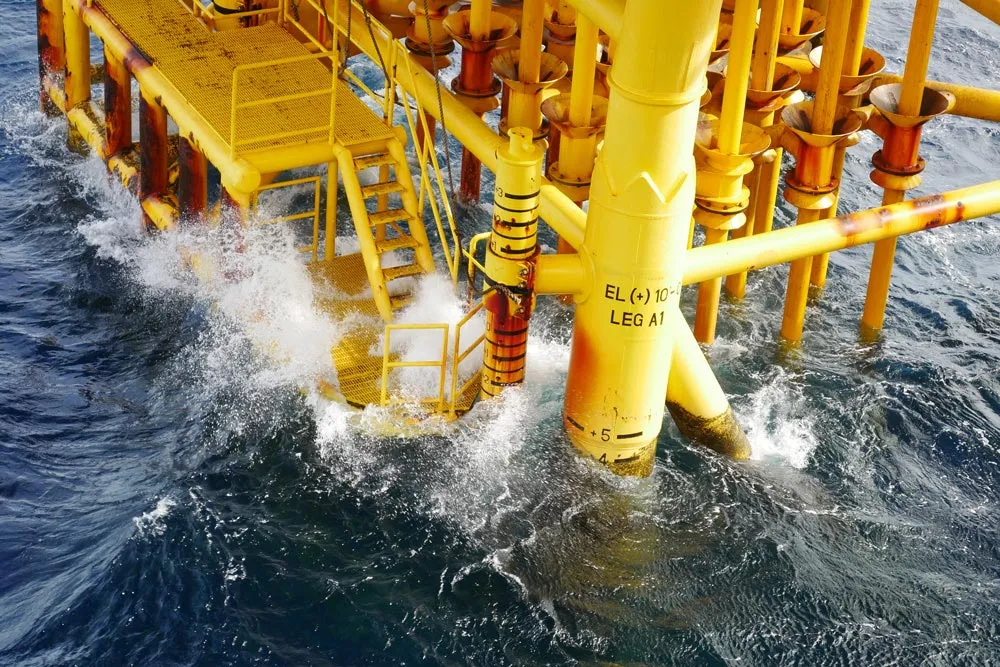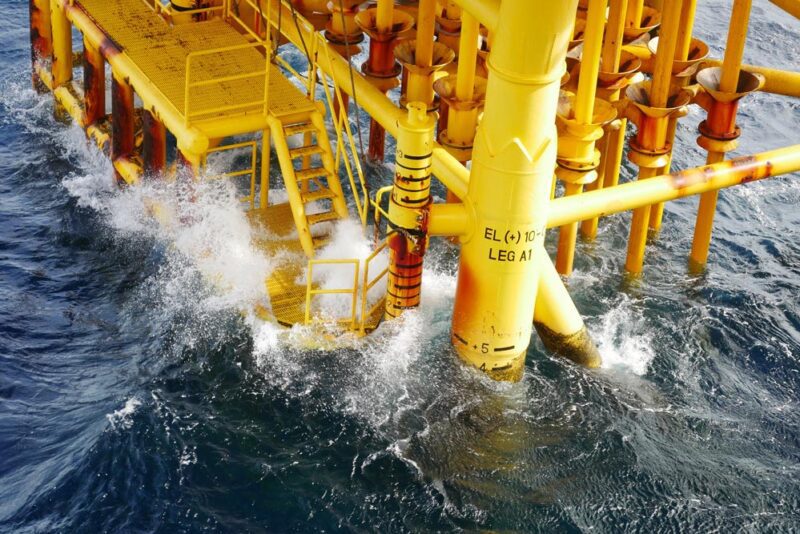
Grâce à l’apprentissage automatique et aux données provenant d’expériences menées dans des bassins à vagues, les ingénieurs du MIT ont trouvé un moyen de modéliser le déferlement des vagues. “Avec cela, vous pourriez simuler les vagues pour aider à concevoir des structures mieux, plus efficacement, et sans facteurs de sécurité énormes”, explique Themis Sapsis. Crédit : iStockphoto
Les prédictions du nouveau modèle devraient aider les chercheurs à améliorer les simulations du climat océanique et à affiner la conception des structures offshore.
Les vagues se brisent lorsqu’elles atteignent une hauteur critique, avant d’atteindre leur crête et de s’écraser en une pluie de gouttelettes et de bulles. Ces vagues peuvent être aussi grandes que le point break d’un surfeur et aussi petites qu’une légère ondulation roulant vers le rivage. Pendant des décennies, la dynamique de la manière et du moment où une vague se brise a été trop complexe pour que les scientifiques puissent la prévoir.
Désormais, MIT engineers have found a new method for modeling how waves break. The researchers tweaked equations that have previously been used to predict wave behavior using machine learning and data from wave-tank tests. Engineers frequently use such equations to help them design robust offshore platforms and structures. But until now, the equations have not been able to capture the complexity of breaking waves.
The researchers discovered that the modified model predicted how and when waves would break more accurately. The model, for example, assessed a wave’s steepness shortly before breaking, as well as its energy and frequency after breaking, more accurately than traditional wave equations.
Their results, published recently in the journal Nature Communications, will help scientists understand how a breaking wave affects the water around it. Knowing precisely how these waves interact can help hone the design of offshore structures. It can also improve predictions for how the ocean interacts with the atmosphere. Having better estimates of how waves break can help scientists predict, for instance, how much carbon dioxide and other atmospheric gases the ocean can absorb.
“Wave breaking is what puts air into the ocean,” says study author Themis Sapsis, an associate professor of mechanical and ocean engineering and an affiliate of the Institute for Data, Systems, and Society at MIT. “It may sound like a detail, but if you multiply its effect over the area of the entire ocean, wave breaking starts becoming fundamentally important to climate prediction.”
The study’s co-authors include lead author and MIT postdoc Debbie Eeltink, Hubert Branger, and Christopher Luneau of Aix-Marseille University, Amin Chabchoub of Kyoto University, Jerome Kasparian of the University of Geneva, and T.S. van den Bremer of Delft University of Technology.
Learning tank
To predict the dynamics of a breaking wave, scientists typically take one of two approaches: They either attempt to precisely simulate the wave at the scale of individual molecules of water and air, or they run experiments to try and characterize waves with actual measurements. The first approach is computationally expensive and difficult to simulate even over a small area; the second requires a huge amount of time to run enough experiments to yield statistically significant results.
The MIT team instead borrowed pieces from both approaches to develop a more efficient and accurate model using machine learning. The researchers started with a set of equations that is considered the standard description of wave behavior. They aimed to improve the model by “training” the model on data of breaking waves from actual experiments.
“We had a simple model that doesn’t capture wave breaking, and then we had the truth, meaning experiments that involve wave breaking,” Eeltink explains. “Then we wanted to use machine learning to learn the difference between the two.”
The researchers obtained wave breaking data by running experiments in a 40-meter-long tank. The tank was fitted at one end with a paddle which the team used to initiate each wave. The team set the paddle to produce a breaking wave in the middle of the tank. Gauges along the length of the tank measured the water’s height as waves propagated down the tank.
“It takes a lot of time to run these experiments,” Eeltink says. “Between each experiment, you have to wait for the water to completely calm down before you launch the next experiment, otherwise they influence each other.”
Safe harbor
In all, the team ran about 250 experiments, the data from which they used to train a type of machine-learning algorithm known as a neural network. Specifically, the algorithm is trained to compare the real waves in experiments with the predicted waves in the simple model, and based on any differences between the two, the algorithm tunes the model to fit reality.
After training the algorithm on their experimental data, the team introduced the model to entirely new data — in this case, measurements from two independent experiments, each run at separate wave tanks with different dimensions. In these tests, they found the updated model made more accurate predictions than the simple, untrained model, for instance making better estimates of a breaking wave’s steepness.
The new model also captured an essential property of breaking waves known as the “downshift,” in which the frequency of a wave is shifted to a lower value. The speed of a wave depends on its frequency. For ocean waves, lower frequencies move faster than higher frequencies. Therefore, after the downshift, the wave will move faster. The new model predicts the change in frequency, before and after each breaking wave, which could be especially relevant in preparing for coastal storms.
“When you want to forecast when high waves of a swell would reach a harbor, and you want to leave the harbor before those waves arrive, then if you get the wave frequency wrong, then the speed at which the waves are approaching is wrong,” Eeltink says.
The team’s updated wave model is in the form of an open-source code that others could potentially use, for instance in climate simulations of the ocean’s potential to absorb carbon dioxide and other atmospheric gases. The code can also be worked into simulated tests of offshore platforms and coastal structures.
“The number one purpose of this model is to predict what a wave will do,” Sapsis says. “If you don’t model wave breaking right, it would have tremendous implications for how structures behave. With this, you could simulate waves to help design structures better, more efficiently, and without huge safety factors.”
Reference: “Nonlinear wave evolution with data-driven breaking” by D. Eeltink, H. Branger, C. Luneau, Y. He, A. Chabchoub, J. Kasparian, T. S. van den Bremer & T. P. Sapsis, 29 April 2022, Nature Communications.
DOI: 10.1038/s41467-022-30025-z
This research is supported, in part, by the Swiss National Science Foundation, and by the U.S. Office of Naval Research.



